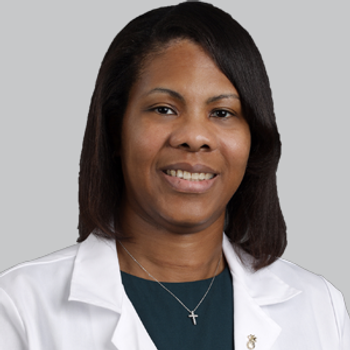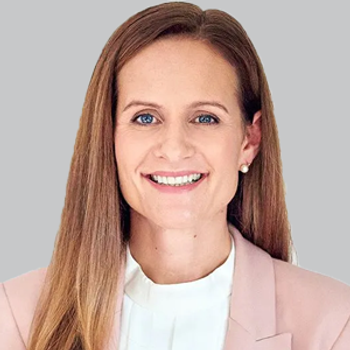
Using Pharmacologic Interventions for Narcolepsy Management
Russell Rosenberg, PhD, DABSM, and Margaret Park, MD, review the optimal treatment selection of pharmacologic options for the management of patients with narcolepsy.
Episodes in this series

Russell Rosenberg, PhD, DABSM: There’s a lot more in the toolbox for narcolepsy than ever, which sort of makes this field exciting. We were talking before about new things that are coming and what we have now. But if you could talk briefly about what’s usually in your toolbox when you’re thinking…what are you thinking about with narcolepsy patients, in terms of starting them, and let’s kind of go through the list of what’s available.
Margaret Park, MD: And again, going back to your point, briefly, with the behavioral aspect. I do tell people, because a lot of times people come in, and they’re like, “What? I have this?” I don’t want people to feel helpless. There’s a lot of things that you can do to make yourself better. There’s a lot of things that everyone can do to make themselves better. Even if it’s making small changes, and in a step-by-step manner. And a lot of times when people come in, and they’re like, “Well, what can I do? And what are things that I need to change?” I’m like, “You take control of certain things. There are certain things you cannot control, but there are some things you can. And if you can control them, start controlling them. Pick 1 thing. And then the next time we talk about it, we’ll see how successful that is. And then we’ll pick another thing.” Thus, I do absolutely think that to give them all this stuff, and then in the end, we say, “Let’s pick 1 thing.” And that’s the same thing with medication approach. We all often forget, again, it’s a 24-hour thing. It’s both night and day. A lot of times we approach the day first because that seems to be the more debilitating symptom, at least subjectively, for the person, where they say, “I have everything you described. I have disrupted sleep. I don’t feel refreshed when I wake up. I’m definitely sleepy but here’s the biggest issue, I am blank. I’m always falling asleep at work. I can’t help my kids with homework at the end of the day. I can’t carry on a relationship because we can’t go out.” Hence, we tend to talk about the day a little bit more because they’re more aware of their symptoms during the day. And most of the medications to date sort of center on this, what I like to call the adrenergic system, the “on” system, where I start pinging things, it binds, it makes my blood pressure heart rate go up and I am on, and eventually, something turns me off. Thus, a lot of the medications are designed around that system where you ping faster, you bind stronger, you maybe just turn off the “off” system. And a lot of these medications work in conjunction with each other. They can complement one another. And thus, part of the challenge is just figuring out which one works for you.
Some of the medications that we think of, initially, our modafinil family, both modafinil [Provigil] and armodafinil [Nuvigil], both which is long-acting, and short-acting and long-acting, respectively. These medications came out to, I like to call them the weak promoters that we don’t think that they directly manipulate neurotransmitters in the wake system. But perhaps they turn off the off system so these newer transmitters can hang out a little bit more to mediate these on effects better or at least longer. And then, of course, the older medications in the stimulant and amphetamine salt family that can, again, manipulate the same thing so that they are more available for the body to keep you turned on. The newer medications kind of stepped outside of the system a little bit, because again, with the elucidation of these pathways between wake and sleep, we’re starting to realize that there are other things that can turn us on and off. And hence, a lot of the newer medications kind of step outside of that system to either directly look at the neurotransmitter system, or possibly enhance an outside system like the histaminergic system. And then, there’s also nighttime modalities available now too, because the idea is, “Well, you know what, I will just push you down. I will make you sleep and then if you sleep, maybe you’ll turn on a little bit better.” Hence, it sort of stabilizes the sleep and weight transition a little bit better, too. There are lots of different medications in that arena. Pitolisant [Wakix] is a newer one that has come out; solriamfetol [Sunosi], and then the oxybate family, which is now available on a lower sodium form. I know there’s a single dose of formulation coming out soon as well.
Russell Rosenberg, PhD, DABSM: That’s a lot to consider with regards to all of these. And it sounds like you really have to tailor the medication to the individual and what their primary symptoms are. Not all narcoleptics have disturbed non-nighttime sleep. Most narcoleptic type 1s do have pretty disturbed nighttime sleep. And oftentimes, you’re using really a polypharmacy approach. I don’t know of too many patients that are on a model therapy. Maybe they start that way. But mentally, I think they become patients who are on multiple therapies.
Transcript Edited for Clarity
Newsletter
Keep your finger on the pulse of neurology—subscribe to NeurologyLive for expert interviews, new data, and breakthrough treatment updates.



































